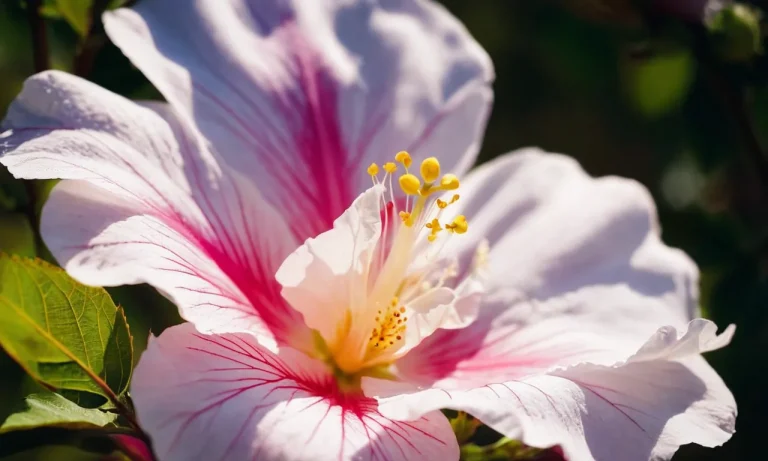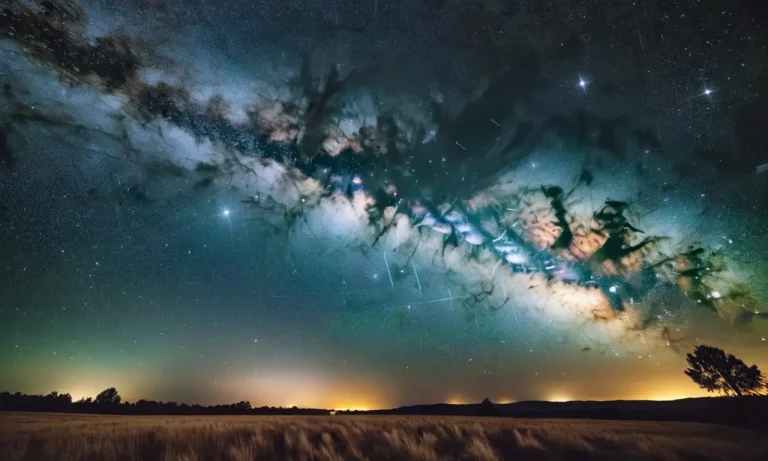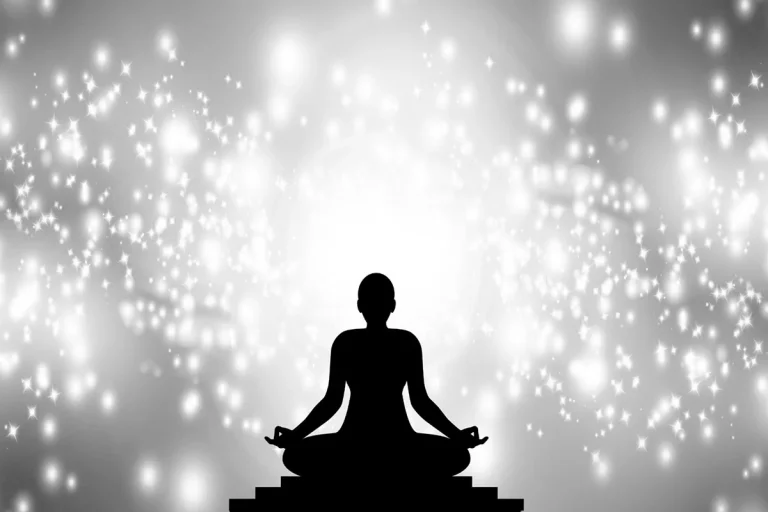Since ancient times, the four cardinal directions of north, south, east and west have held deep spiritual significance in cultures and faiths around the world. The orientations align with the cycles of nature, the path of the sun, and core tenets of philosophy and self-cultivation practices.
If you’re short on time, here’s a quick answer: the cardinal directions represent fundamental principles – north for earth and winter, south for fire and summer, east for spring and wood, west for autumn and metal.
In this comprehensive guide, we’ll explore the rich spiritual symbolism of each direction present in religious texts, teachings, rituals, architecture and more.
The Spiritual Meaning of North
Cold, Dark and Unchanging
In many cultures, the northern direction is associated with the qualities of cold, darkness, and a certain unchanging permanence. Just as the northern lands tend to be colder in climate, the spiritual North is seen to reflect inner states of emotional frigidity or isolation.
It can depict an aloof personality or a closed-off attitude (being “frosty” towards others). In Native American and Celtic traditions especially, North was seen as the dark half of the year when the life-giving Sun retreated, and thus it embodies darkness, night, and shadows.
Yet within this darkness rests the promise of dawn’s return. North’s unchanging nature reflects the steadfast, loyal aspect that stands firm in commitment. Without having experienced the depths of winter, one cannot fully appreciate the joys of spring.
Earth, Grounding and the Physical Plane
As the direction that leads towards Earth’s ground and foundation, North relates to the physical, tangible world. If the ethereal realms are “up” in the Heavens, then North is very much “down” into matter, weight, density.
It represents being grounded in reality, focused on what can be touched, measured or built up steadily over time.
In Vastu Shastra and Feng Shui, placing heavier furniture like beds, bookcases or file cabinets in the northern parts of a room aids in creating solidity. The northern area becomes an anchor point bringing stability.
Crystals and stones carrying Earth energy like smoky quartz, jet and obsidian can amplify these grounding effects.
Obstacles, Difficulties and Overcoming Challenges
While North is seen as an axis of stillness and strength, its colder, darker qualities also depict obstacles, blockages, and difficulties in life. Bitter winds, frozen lands and impenetrable barriers imply hardships that must be endured or overcome.
The northern winter season brings death to vegetation, symbolizing life’s painful endings.
Yet if one persists through these challenging periods with determination and resilience, the spring thaw will eventually come. The northern direction thus represents trials that demand much effort to push through, but ultimately make us stronger.
Placing the North at one’s back lends courage and toughness to press on.
Death, Rebirth and Realization of Mortality
As the descendent place of the Sun each year, North has strong connections with decreasing sunlight, barren landscapes, and the expiration of life. The annual dying and rebirth of vegetation makes it a symbolic direction related to cycles of death and rebirth.
The cold, hard reality of mortality becomes most starkly evident during North’s winter.
People indigenous to northern climates embraced these truths, seeing North as speaking to the temporary nature of existence. Yet within its message of impermanence rested the seed of spiritual awakening towards living fully.
Only by honestly confronting death can one then choose to live more meaningfully. For ancients and mystics both, the chilling darkness of North thus sparked the fires of renewed passion for participating joyfully in the dance of Life.
The Spiritual Meaning of South
Warm, Bright and Life-Giving
In many spiritual traditions, the southern direction represents warmth, brightness and the life-giving power of the sun. Ancient Egyptian texts speak of the south as bringing “heat and health” while in Hindu scriptures it is associated with Surya, the sun god.
The Hopi tribe of North America see the south as the source of crops and abundance.
The vibrant energy of the south also has parallels in human life. Like the warmth of the noonday sun, it speaks of joyfulness, enthusiasm and living life to the fullest. Many wisdom teachings remind us to nurture our inner light during tough times so that we can tap into this invigorating southern energy.
Fire, Passion and Creativity
The south’s symbolism with fire extends beyond mere warmth to signify inner passion and creativity too. Fire not only gives heat but illuminates our path in the darkness. The ancient alchemists saw it as vitalizing the soul and bringing inspiration.
Similarly, the southern direction in spiritual traditions is linked with high enthusiasm, artistic expression and innovative thinking.
By connecting with the blazing, inextinguishable fire within, we can let our natural talents shine through in amazing ways. We all have that creative spark yearning to be expressed meaningfully. The spirit of the radiant south reminds us to fan these inner flames and share our gifts with the world 🔥
Joy, Laughter and Celebration
The brightness of the south evokes happiness, merriment and festivity too. Summer solstice celebrations worldwide from ancient to modern times recognize the full power of the sun in the south and its uplifting energy.
Many spiritual teachings speak of divine joy as an essential quality to cultivate no matter the external circumstances.
Laughter in particular has deep spiritual roots across traditions as a means to uplift oneself and others. In the Native American medicine wheel, the south is seen as a place of singing, dancing and general jubilance.
By embracing the playful, creative south energies, we can smile more, take life a little less seriously and spread positive vibes all around 😊
Spirituality, Enlightenment and Divine Guidance
As the direction of the noonday sun, the south also represents the heights of illumination and spiritual awakening. Zen monks speak poetically of “finally seeing the southern mountains” as a metaphor for the enlightened state.
Many wisdom teachers faced south during meditation as they opened to divine inspiration from within.
The ancient Egyptians constructed their temples oriented to the south to align with the cosmic principle of spiritual ascension. Today, we can still work with the uplifting energy of the south when we seek inner wisdom or want to elevate consciousness.
It serves as a compass pointing to our highest potentials waiting to unfold through grace and dedicated effort 🙏
The Spiritual Meaning of East
The Dawning Sun and New Beginnings
In several spiritual and religious traditions, the East symbolizes new beginnings from where the sun rises every dawn. It epitomizes the start of a new day and the first light. The rising of the morning sun infuses fresh energy and symbolizes birth or genesis.
It offers the promise of a clean slate after the darkness of the night.
Spring, Birth and Youth
The East is associated with springtime when nature comes alive after the dormancy of winter. Flowers bloom, and animals awaken in spring. It represents the vibrant energy of youth. In Chinese astrology and spiritual traditions, for example, the East represents the beginning of the new yearly cycle.
Conceptualization, Exploration and Possibility
The sunrise in the East signifies new ideas, goals, visions, and dreams. The Eastern direction allows us to conceptualize and explore possibilities. It inspires the visionary and creative side of our nature.
We can plant metaphorical seeds in our mind and nurture their growth as the sun rises each day.
Air, Breath and Communication
In Feng Shui and some Native American traditions, East represents air and wind. Thus it signifies breath, speech, and communication. Breathing helps oxygenate our body and mind, thereby allowing better communication, expression, and exchange of ideas.
The East helps activate this vital air energy within us.
The Spiritual Meaning of West
Dusk, Completion and Rest
In many cultures, the west is seen as the direction of dusk, completion, and rest. As the sun sets in the west each evening, it signals a time of closure and reflection on the day’s activities. This makes the west a fitting symbol for the wrap up of projects and responsibilities before the regenerative rest that night brings.
Spiritually, west represents a time to harvest the fruits of your labors. It is associated with maturity, soul wisdom and inner stillness cultivated through life experiences. The start of each new day in the east gives birth to goals and plans; the west is the fulfillment of hopes and dreams through effort and due diligence.
Autumn, Harvest and Fulfillment
The autumn season beginning in the Northern Hemisphere is also strongly tied to the energies of the west. As natural cycles nurture seeds into full manifestation, fall is a golden period of harvest and plenty before the return to spring.
We reap in autumn what was sown in spring, just as broad life themes seeded in youth may come to full bloom later in adulthood. It is a rich time of fruition and abundance capped off with winter hibernation and gestation preparing for renewed creativity.
Emotions, Dreams and the Subconscious
In some mystical traditions, the water element governing fluid states of being is designated to the west. So too are the more irrational, chaotic dimensions of human life seen in emotions, fantasies, dreams and the murky depths of the unconscious.
By diving into shadowy interior places often repressed or overlooked, surprising self-discoveries come to light and wholeness is restored. It takes courage not to avoid the messy areas of mind and feeling.
But hidden gems are uncovered when we commit to doing our “inner work” with courage and compassion.
Water, Flow and Adaptability
Water itself is considered a chief west emblem. Found in lakes, rivers and oceans west of many world hubs, water also exhibits the malleable nature distinctive of the west. With the sun dipping below the horizon line, the west cues preparation for the unknown.
The fluid quality of water models the adaptability needed when plans require shifts or life changes lead to unfamiliar terrain. Like the shoreline continuously sculpted by waves of change, we keep our balance by bending instead of rigidly clinging to control.
Conclusion
As we’ve seen, the four cardinal directions have profoundly influenced spiritual worldviews across faiths and cultures – codifying fundamental cosmic interplays of dark and light, construction and dissolution, order and chaos.
More than mere geomagnetic coordinates, these orientations manifest rich layers of meaning and metaphor at both personal and universal scales – speaking to the cyclical nature of existence itself. Whether honoring the north as old age and winter, the south as passion and summer, the east as rebirth and spring, or the west as dreams and autumn – the four directions provide an encompassing framework to orient our place within the great cosmic dance.






